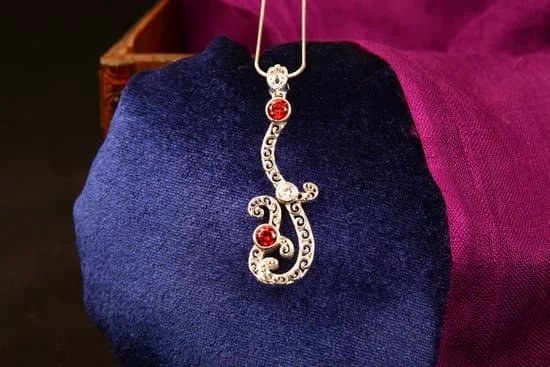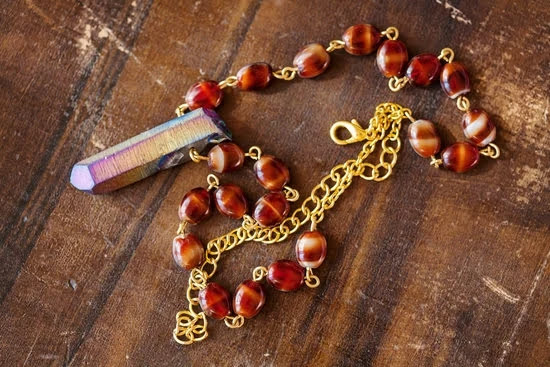Fine jewelry is not only an expression of personal style and taste, but it also represents an investment in quality, craftsmanship, and luxury. The term “fine jewelry” typically refers to pieces that are made with precious metals, gemstones, and exceptional attention to detail. Given the significant financial value often associated with fine jewelry, there is a growing debate about whether all fine jewelry should be stamped for authentication and quality assurance.
The process of stamping jewelry has been around for centuries and serves as a way to mark pieces with specific information such as the metal purity, manufacturer’s mark, country of origin, and more. This practice has historically played a crucial role in establishing the authenticity and quality of fine jewelry. As consumers continue to demand transparency and assurance when making substantial purchases, the relevance of jewelry stamping has come into question.
In this article, we will explore the history and purpose of jewelry stamping, legal requirements for stamping fine jewelry, as well as its role in ensuring authenticity and quality. We will also delve into the ongoing debate surrounding whether all fine jewelry should be stamped, alternative methods for verifying authenticity, and the importance of trusting the source and seller when investing in fine jewelry. Join us as we navigate through these essential aspects that shape the world of fine jewelry.
The History of Jewelry Stamping and Its Purpose
The practice of stamping jewelry with marks or symbols to indicate its quality, purity, and origin has been in existence for centuries. The history of jewelry stamping dates back to ancient civilizations such as Egypt, Greece, and Rome, where precious metals were marked to indicate their purity and the artisan who created them. This tradition continued through the Middle Ages and into the modern era, evolving to meet changing consumer demands and legal requirements.
Evolution of Jewelry Stamping
In the 19th century, with the rise of industrialization and mass production, the need for standardization and regulation in the jewelry industry became increasingly important. This led to the establishment of hallmarking systems in various countries, where official stamps or hallmarks were used to verify a piece’s authenticity and quality. These marks served as a guarantee to consumers that they were purchasing genuine, high-quality jewelry.
Purpose of Stamping
The primary purpose of jewelry stamping is to provide transparency and assurance to consumers. By imprinting a piece of fine jewelry with specific markings that denote its metal content, purity level, and origin, manufacturers are able to convey important information about the product. This not only helps consumers make informed purchasing decisions but also safeguards against fraud and misrepresentation within the industry.
Despite its long history and established purposes, there are ongoing discussions regarding whether fine jewelry should always be stamped. While some argue that mandatory stamping ensures accountability and consumer protection, others believe that alternative methods can achieve the same goals without imposing unnecessary restrictions on artisans and small-scale producers.
Legal Requirements for Stamping Fine Jewelry
What Does the Law Say About Stamping Fine Jewelry?
In many countries, there are specific legal requirements for stamping fine jewelry. These regulations typically dictate that certain types of precious metals, such as gold and silver, must be stamped with a mark that indicates the metal purity.
For example, in the United States, the Federal Trade Commission (FTC) requires that all gold jewelry sold in the country must be stamped with a karat mark to indicate the purity of the gold. Failure to comply with these regulations can result in hefty fines and legal consequences for jewelry manufacturers and sellers.
The Importance of Compliance
Complying with legal requirements for stamping fine jewelry is crucial for consumer protection. When a piece of jewelry is stamped with the appropriate marks indicating its metal purity, consumers can have confidence in the quality and authenticity of the item they are purchasing. This not only protects consumers from fraudulent or misleading claims about the materials used in the jewelry but also ensures fair competition among jewelry makers as well.
Should Fine Jewelry Always Be Stamped?
There is an ongoing debate regarding whether all fine jewelry should be required to be stamped. Some argue that while stamping provides important information about metal purity, there are other ways to verify the authenticity and quality of fine jewelry. Additionally, there are concerns about potential damage to delicate pieces during the stamping process.
However, proponents of stamping emphasize its role in fostering consumer trust and confidence in the jewelry industry. Finding a balance between stamping requirements and alternative verification methods is essential for ensuring consumer protection without unduly burdening jewelry makers.
The Role of Stamping in Ensuring Authenticity and Quality
Stamping is a crucial aspect of fine jewelry production that should not be overlooked. When fine jewelry is stamped, it provides essential information about its authenticity, quality, and material composition. This is particularly important for consumers who want to ensure that they are purchasing genuine and high-quality pieces. The stamp on jewelry serves as a guarantee of the metal purity and can also indicate the manufacturer or designer.
Furthermore, the act of stamping fine jewelry can serve as a form of consumer protection. By having specific marks or stamps on the jewelry, it becomes easier for consumers to identify genuine pieces from counterfeit ones. This also helps in maintaining consumer confidence and trust in the jewelry industry. Therefore, there are legal requirements in place mandating that fine jewelry should be stamped to protect consumers from fraudulent practices.
In addition to protecting consumers, the practice of stamping also benefits manufacturers and sellers by establishing their credibility in the market. When fine jewelry is properly stamped with accurate markings, it adds value to the piece and enhances its marketability. This demonstrates to potential buyers that the jewelry has undergone thorough quality control measures and meets industry standards. Therefore, it is evident that stamping plays a significant role in ensuring authenticity and quality within the fine jewelry industry.
| Importance | Role |
|---|---|
| Authenticity | Guarantees metal purity and indicates manufacturer |
| Consumer Protection | Helps identify genuine pieces from counterfeit ones |
| Credibility | Adds value to the piece and enhances its marketability |
The Debate
Proponents of stamping argue that it provides an assurance of quality and authenticity to consumers. When purchasing fine jewelry, customers often look for stamping as a sign that the piece is made from genuine precious metals and gemstones. Without these marks, buyers may be skeptical about the true value and materials used in the jewelry.
On the other hand, opponents of mandatory stamping suggest that not all fine jewelry requires this marking. For example, some artisanal or one-of-a-kind pieces may not fit the traditional standards for stamping due to their unique designs or crafting techniques. In these cases, relying solely on stamping might not accurately represent the value and craftsmanship of the piece.
| Arguments for Stamping | Arguments Against Stamping |
|---|---|
| Provides assurance of quality and authenticity | Not all fine jewelry requires traditional stamping |
| Helps consumers make informed purchasing decisions | Unique artisanal pieces may not fit traditional stamping standards |
| Industry standard for verifying materials used in jewelry | Relying solely on stamping might not accurately represent value and craftsmanship |
Alternatives to Stamping for Verifying Fine Jewelry
When it comes to verifying the authenticity and quality of fine jewelry, stamping is just one method among several. Here are some alternatives to consider:
- Hallmarks: Instead of relying solely on stamps, look for hallmarks on your fine jewelry. These are symbols or marks that indicate the metal content and purity of the piece. For example, a “925” hallmark means that the piece is made of sterling silver, while a “750” hallmark means it’s made of 18-karat gold.
- Certificates of Authenticity: Many reputable jewelers and jewelry brands provide certificates of authenticity with their fine jewelry pieces. These documents outline all relevant details about the piece, including its materials, gemstone quality, and craftsmanship. When purchasing fine jewelry, it’s always wise to ask if a certificate of authenticity is available.
- Professional Appraisal: If you have any doubts about the authenticity or value of your fine jewelry, consider getting it professionally appraised. An experienced appraiser can thoroughly examine the piece and provide you with a detailed report on its qualities and worth.
Ultimately, while stamping can be an important aspect of verifying fine jewelry, it should not be the sole factor in determining authenticity and quality. By considering hallmarks, certificates of authenticity, and professional appraisals, consumers can make well-informed decisions when investing in fine jewelry pieces.
The Importance of Trusting the Source and Seller of Fine Jewelry
When it comes to purchasing fine jewelry, one of the most important factors to consider is the trustworthiness of the source and seller. This is especially crucial in an industry where counterfeit and fraudulent products are prevalent. Here are some key points to keep in mind when it comes to trusting the source and seller of fine jewelry:
- Reputation: Research the reputation of the jeweler or retailer. Look for customer reviews, ratings, and any certifications or memberships with reputable jewelry associations.
- Transparency: A trustworthy seller should be transparent about the origin, quality, and authenticity of their jewelry. They should also provide clear information about any certifications or stamps that authenticate the piece.
- Certification: Look for sellers who provide certification for their fine jewelry. This could include a stamp from an independent grading laboratory such as GIA (Gemological Institute of America) or AGS (American Gem Society). These certifications serve as a guarantee of quality and authenticity.
In addition to these considerations, consumers should also be cautious when purchasing fine jewelry online. It is important to verify the credibility of the website and ensure that they have secure payment options and a clear return policy. Ultimately, trusting the source and seller of fine jewelry is essential in ensuring that you are investing in genuine and high-quality pieces.
Ultimately, while stamping provides a level of assurance regarding the quality and authenticity of fine jewelry, it should not be the sole factor in determining trustworthiness. Trusting the source and seller ultimately requires due diligence on behalf of consumers to ensure that they are making informed purchases. By considering reputation, transparency, certification, and exercising caution when shopping online, consumers can confidently invest in fine jewelry that meets their expectations for quality and authenticity.
Conclusion
In conclusion, the debate over whether fine jewelry should always be stamped is a complex issue that requires a careful balance between industry regulations and consumer trust. While stamping has historically played a crucial role in verifying the authenticity and quality of fine jewelry, there are also alternative methods for achieving the same goal.
Ultimately, it is important to prioritize consumer confidence by ensuring that they can trust the source and seller of the jewelry, regardless of whether it is stamped.
Legal requirements for stamping fine jewelry serve an important purpose in maintaining standards and protecting consumers from counterfeit products. However, these requirements should not overshadow the need for transparency and trust within the industry. Consumers deserve to have confidence in their purchases and know that they are getting what they paid for, whether or not the jewelry is stamped.
Moving forward, it is essential for stakeholders in the fine jewelry industry to continue evaluating the role of stamping and explore alternative methods for ensuring authenticity and quality. By doing so, they can strike a balance between meeting regulatory requirements and fostering consumer trust. In the end, both objectives are vital to maintaining the integrity of the industry as a whole.
Frequently Asked Questions
Can Real Jewelry Have No Markings?
Yes, real jewelry can have no markings. Some pieces of jewelry, especially older ones or those from various cultures, may not have any markings indicating their authenticity or metal content. In these cases, it’s important to have the piece evaluated by a professional jeweler to determine its authenticity and value.
How Can You Tell if Jewelry Is Fine?
You can tell if jewelry is fine by examining its markings, such as “14K” or “18K,” which indicate the purity of the gold used in the piece. Additionally, fine jewelry often has a maker’s mark or trademark stamped on it, indicating the manufacturer or designer.
Another indicator of fine jewelry is the use of precious gemstones like diamonds, rubies, sapphires, and emeralds set in quality metals such as gold, platinum, or sterling silver.
Does All Real Jewelry Have a Stamp?
Not all real jewelry has a stamp. While most modern fine jewelry is stamped with markings indicating its metal content and authenticity, some older pieces and artisan-crafted jewelry may not have any markings at all.
This doesn’t necessarily mean that the piece isn’t real; rather, it may require a closer inspection by a professional to determine its authenticity and value.

Welcome to my jewelry blog! My name is Sarah and I am the owner of this blog.
I love making jewelry and sharing my creations with others.
So whether you’re someone who loves wearing jewelry yourself or simply enjoys learning about it, be sure to check out my blog for insightful posts on everything related to this exciting topic!





